Our next port of call after the Isle of Man was Dublin. Instead of beating against the southwestern wind to Dublin we decided to turn west, cross the Irish Sea and spend a night in Ardglass harbour. Next day it would be an easy ride towards south and Dublin.
It is 33 nautical miles from the Isle of Man to Ardglass. At first we had a good sailing but soon we slowed down due to lack of wind and turned on the iron genny. According to the charts there are only 1.5 metres of water during the low water in Ardglass. However the locals told already on the Isle of Man that the harbour is 24h accessible nowadays. The entrance is dredged into the rocky bottom and one must only be careful about staying on the well-marked fairway.
Ardglass is a small fishing village that seemed to be an overnight resting place for sailors on a way south or north. Some call the eastern coast of Ireland a highway of the boats as most passing boats are either on a way north to Scotland or south from there.
We also concluded that we were one of the first Finnish boats there as one of the locals pondered about the location of Finland: “Finland, that is the capital of Greenland”.
We also resorted to the help of Perkins on our journey to Dublin. Only at the Dublin Bay the wind suddenly increased to 20 knots and continued blowing like this for the next two weeks increasing at the times to 35 knots. During our entire stay in Dublin it was cold, rainy, wet and windy. Where is the summer?
There are four marinas in Dublin area. The northernmost is Malahide. On the north of the Dublin Bay is located the Howth Marina. Near the city centre is Poolbeg with only a few visitor’s berths and the stays there are limited only to a few days due to the high demand. On the southern shore of the Dublin Bay is the Dun Laoghaire Marina with 820 berths and at least the same amount of mooring buoys.
During the departure to Dun Laoghaire we called and reserved a berth for Suwena. When arriving in windy conditions it was easy to moor at designated berth instead of circling around and looking for a berth. The marina staff had told us to put the fenders on the starboard side. We prefer to moor her stern first and of course the fenders were on the wrong side. Andrus drove in circles while I quickly changed fenders and soon the lines were safely made fast.
The basin inside the outer breakwater is about 1km by 1km in size and it contains the marina, a ferry port, several mooring fields and a lot of free space. There are also seven yacht clubs based in Dun Laoghaire, three of them have amazing miniature Palladian villas in the neo-classical style as their clubhouses. The yacht clubs have made a good usage of the area inside the breakwater as the dinghy sailors and rowers went training frequently. The breakwaters give really a good safe environment for juniors to practice.
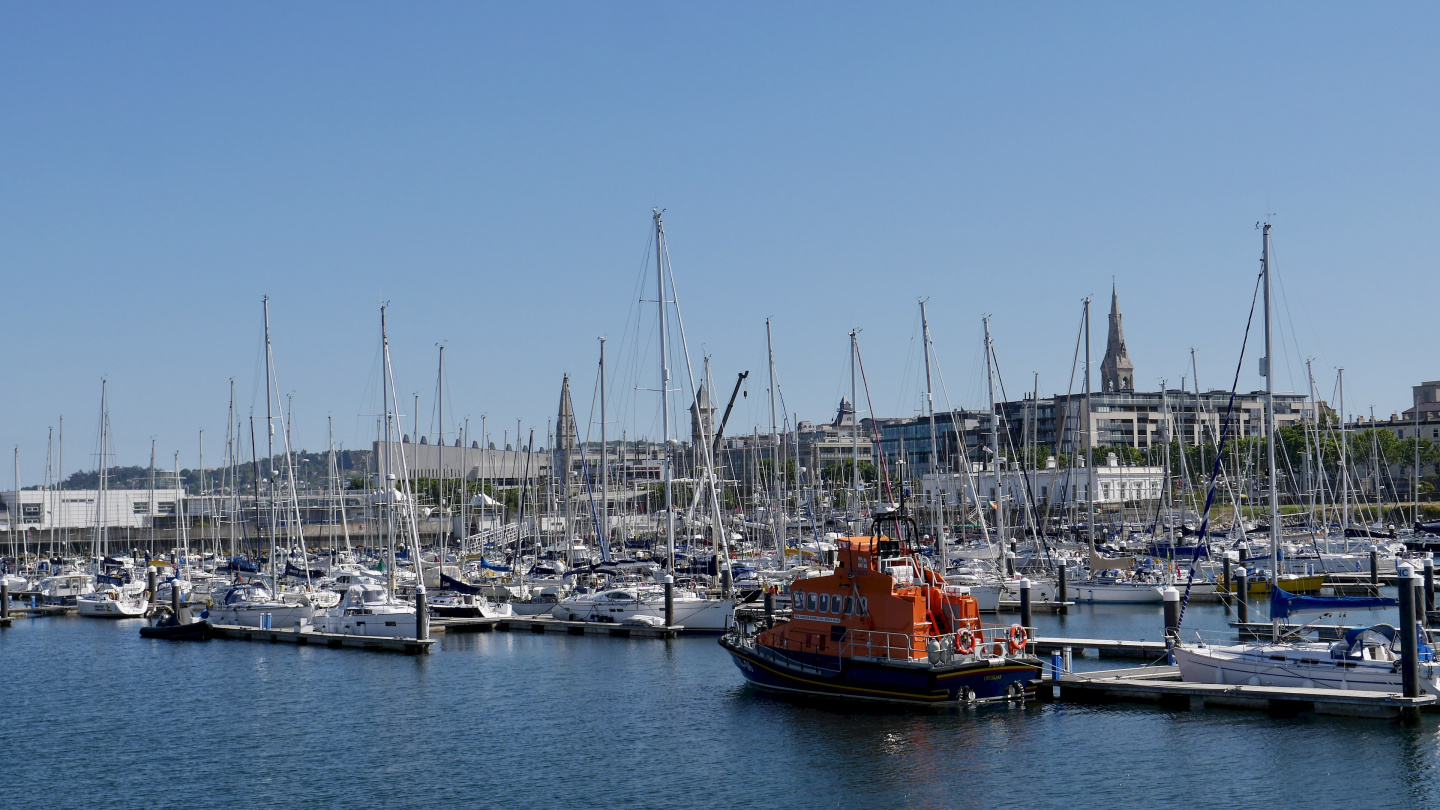
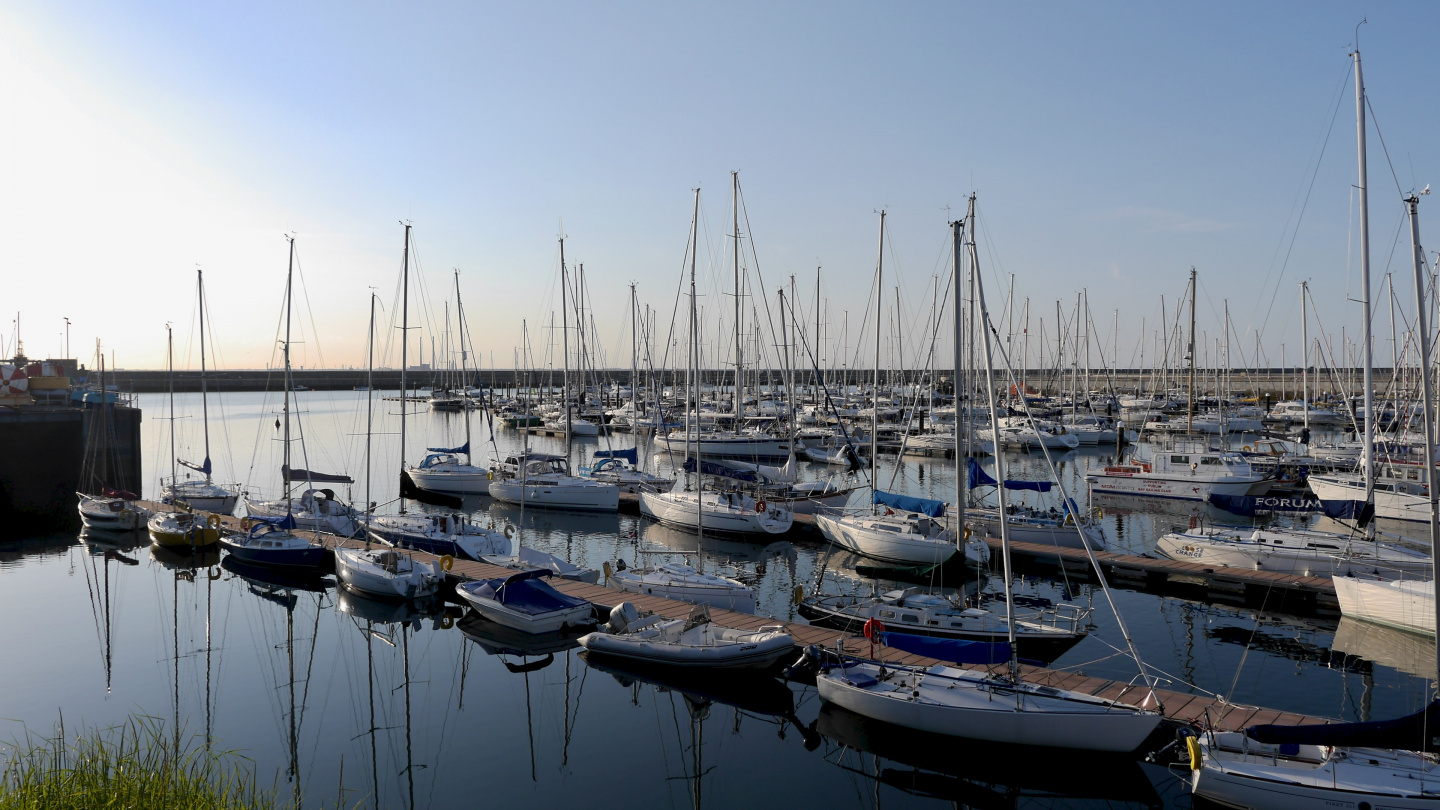
Last year, while looking wintering harbour for Suwena we seriously considered Dublin as one possibility. Most people we met recommended the Howth Marina to us. However Howth gave really indifferent image of itself, there were no answers to phone calls and emails when asking for wintering offer. Again this spring we initially planned stopping in Howth where we needed to have a parcel delivered for waiting us. Again there were no replies to emails or phone calls. It seems that visitors are not welcome there at all and we decided to stay in Dun Laoghaire instead, where everything was arranged easily. Later when we flied to Belgium for business during our stay in Dublin we descended over the Howth marina. It looked it was full of smaller boats and there wouldn’t be any space for Suwena anyhow.
There are 12 kilometres from Dun Laoghaire to Dublin centre and the local train DART is running every 20 minutes. It is amazing that we were again at a place where something had happened first time ever. In 1834 the first Irish train service started between Dublin and Dun Laoghaire. Of course nowadays there are also bus services to Dublin and airport. For example Aircoach is running hourly 24h every day to the airport.
The harbour is located next to the centre of Dun Laoghaire. While signing in we received a welcome package with the map of Dun Laoghaire including discount coupons for several restaurants and even a grocery store. We were also welcomed by local sailors to visit their Yacht Club’s clubhouses.
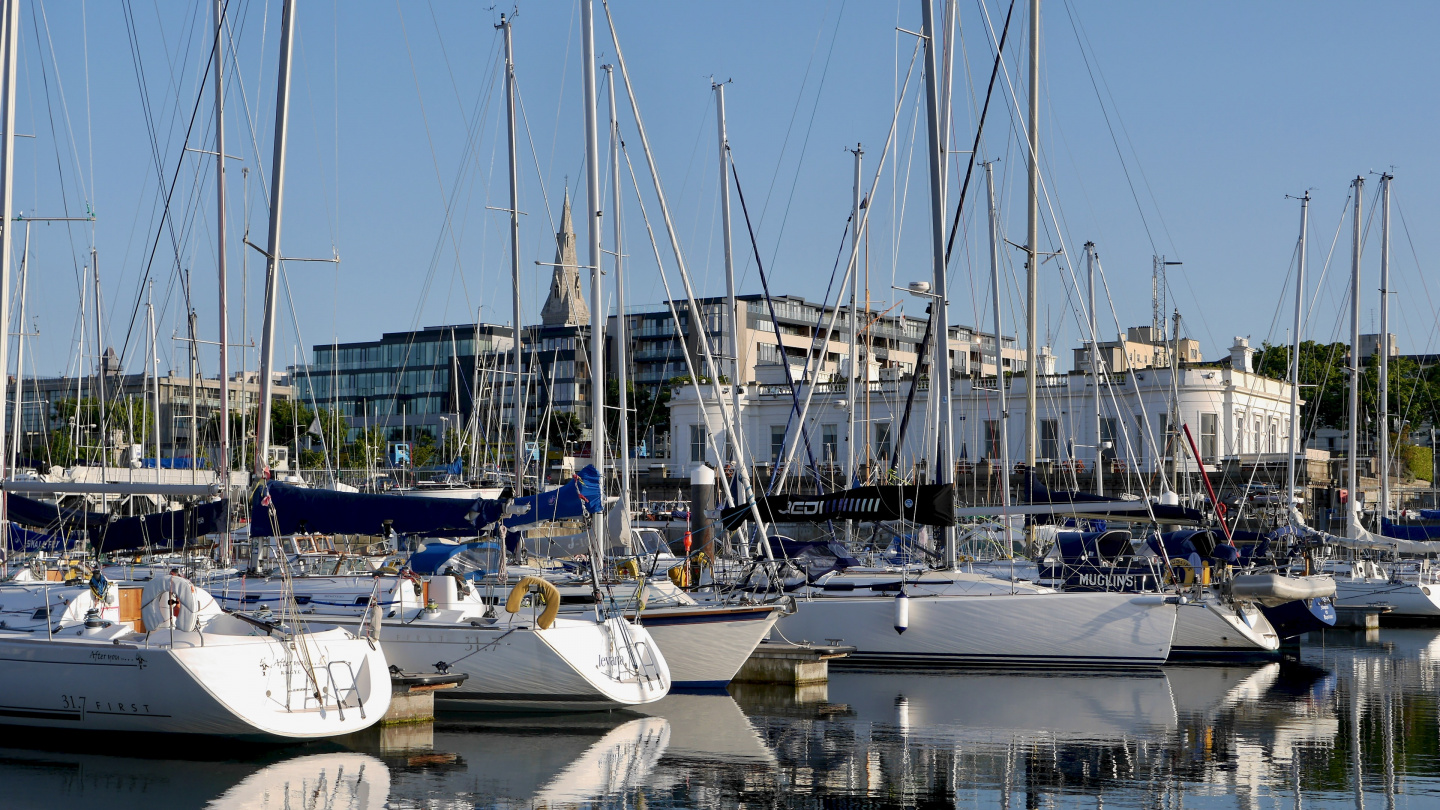
There are a lot to see in Dublin. The mix of several languages creates babble that is a typical for a major tourist city. On the north shore of the river Liffey is the shopping paradise spread out on several streets. On the southern shore is the restaurant and pub area where the Irish music entertains patrons in many establishments. After a busy day of shopping it is easy to cross the river on various bridges. The most famous of the bridges is the Bridge of O’Connell. That is btw wider than longer.
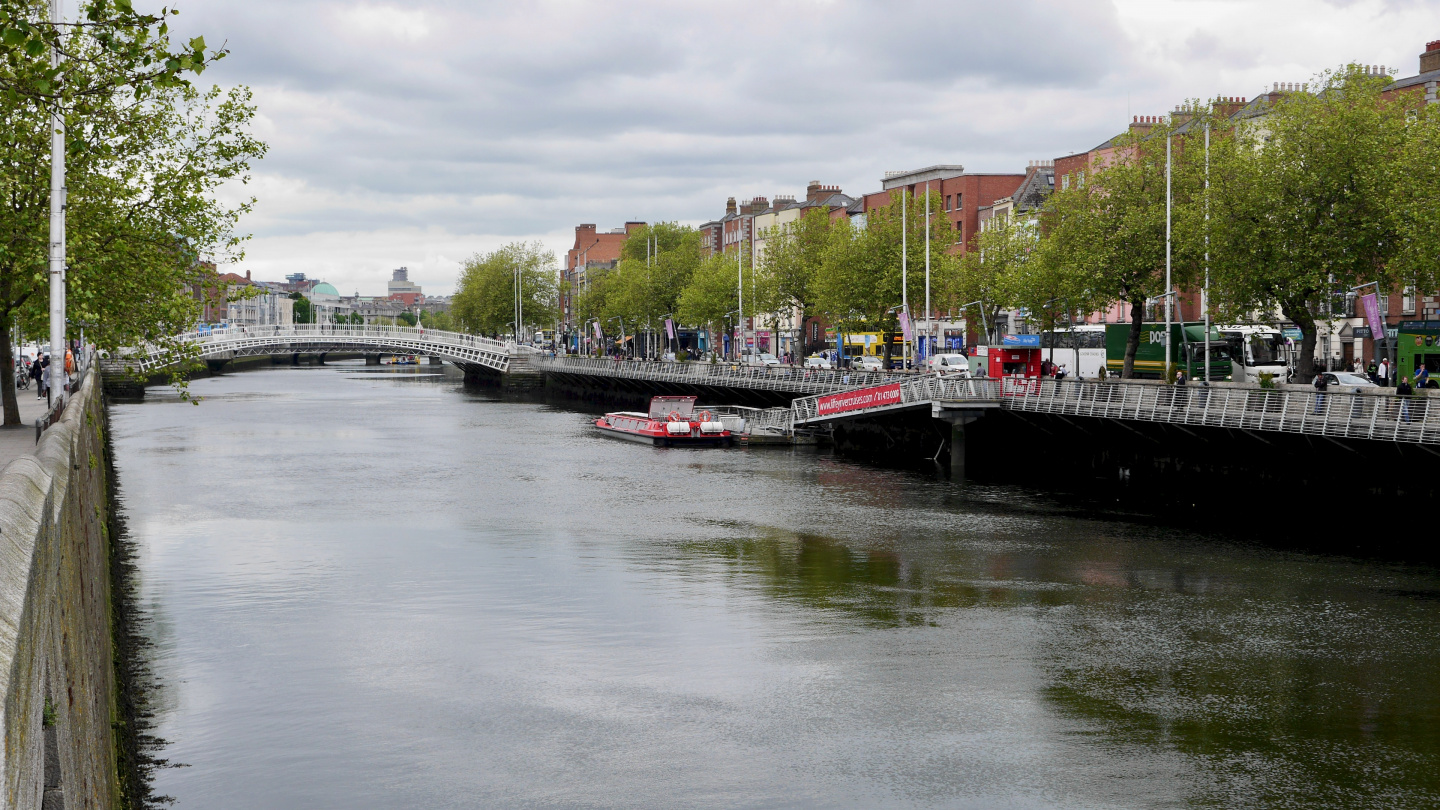
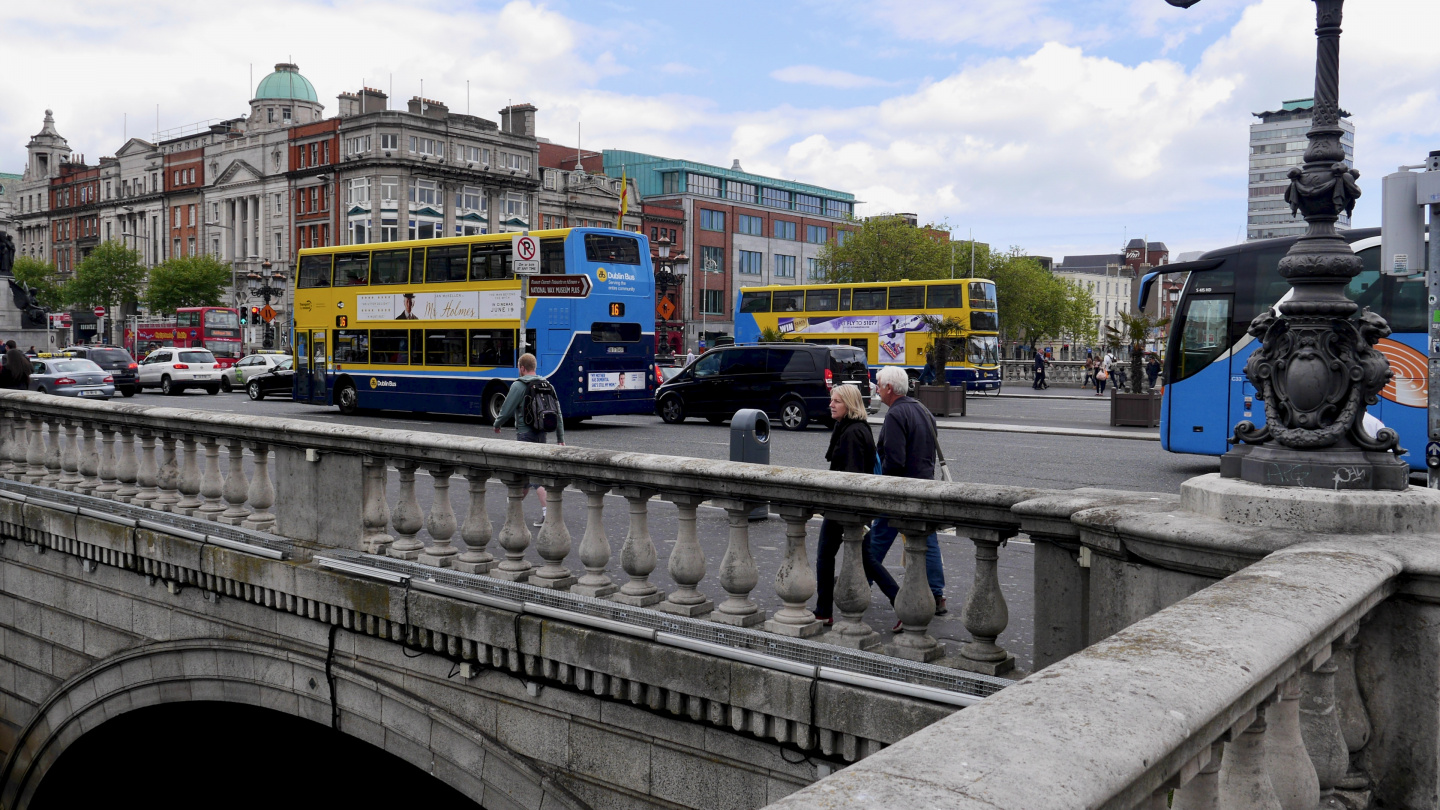
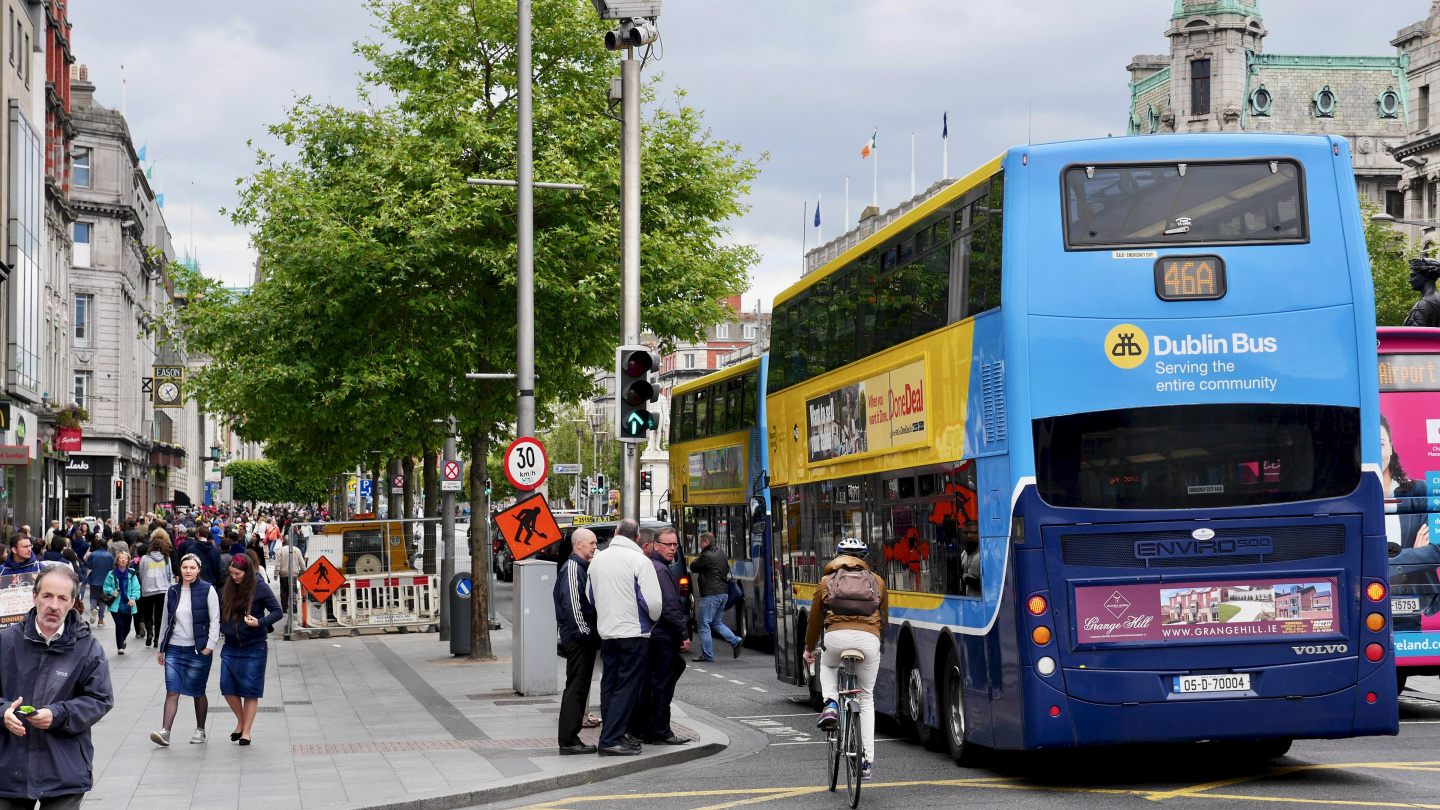
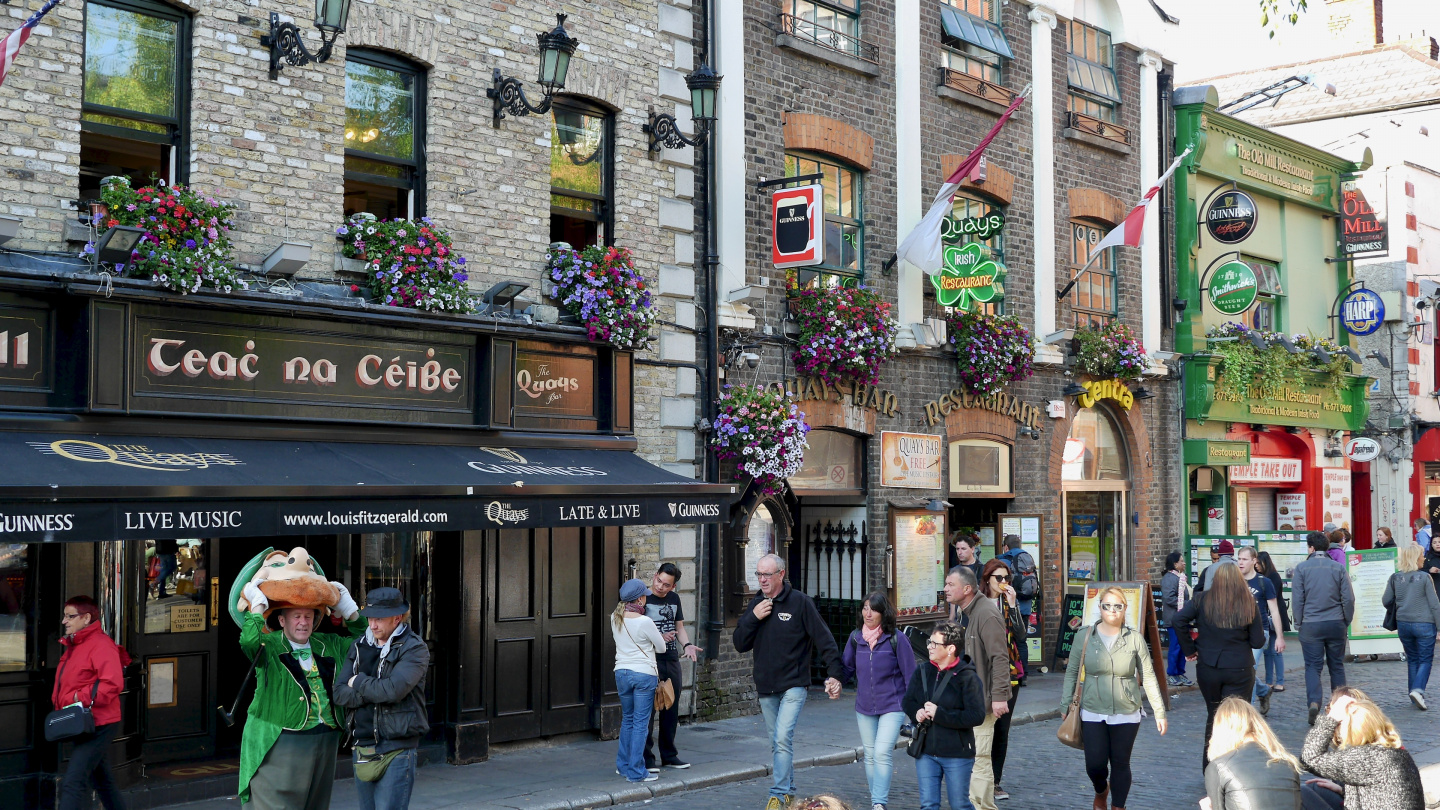
There is the old saying that “Guinness does not travel well”. It was definitely one of the mysteries for us to solve and after doing scientific tests in Mythbusters style we can confirm. Guinness really tastes better in Dublin.
Guinness is definitely our favourite beer and thus our steps took us to the pilgrimage to the lifetime work of Arthur Guinness. He must have had a good faith in his beer when signing a lease of 9000 years for four acres in 1759 where the Guinness brewery was originally located. I believe that Arthur himself would be rather satisfied to see that the Guinness Storehouse is the biggest sightseeing place in Ireland today.
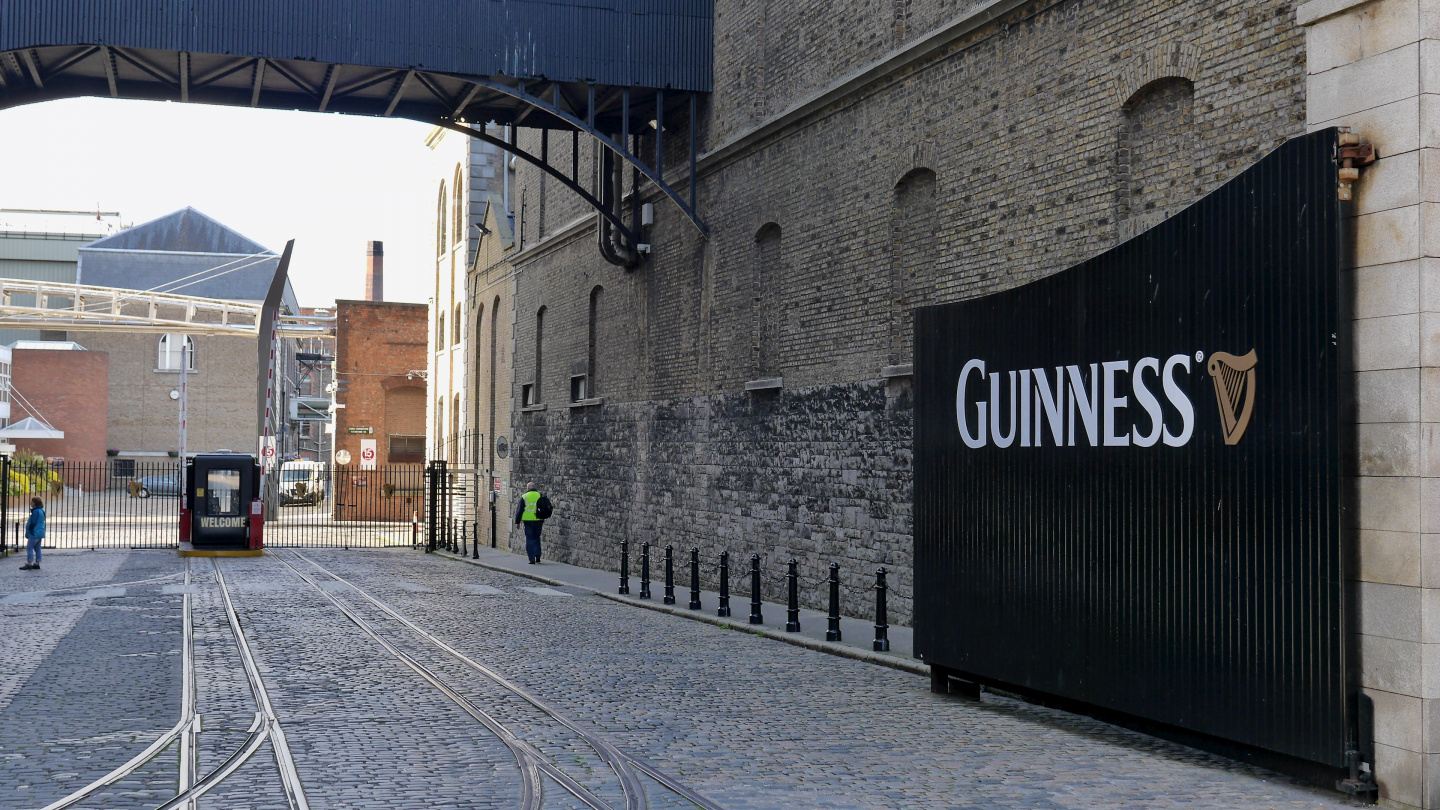
While the Titanic centre in Belfast was a total disappointment to us, the Guinness storehouse exceeded our expectations. We learned in Guinness Academy on how to pour a perfect Guinness pint with that wonderful creamy head. The pint was even better after pouring it by our own hands.
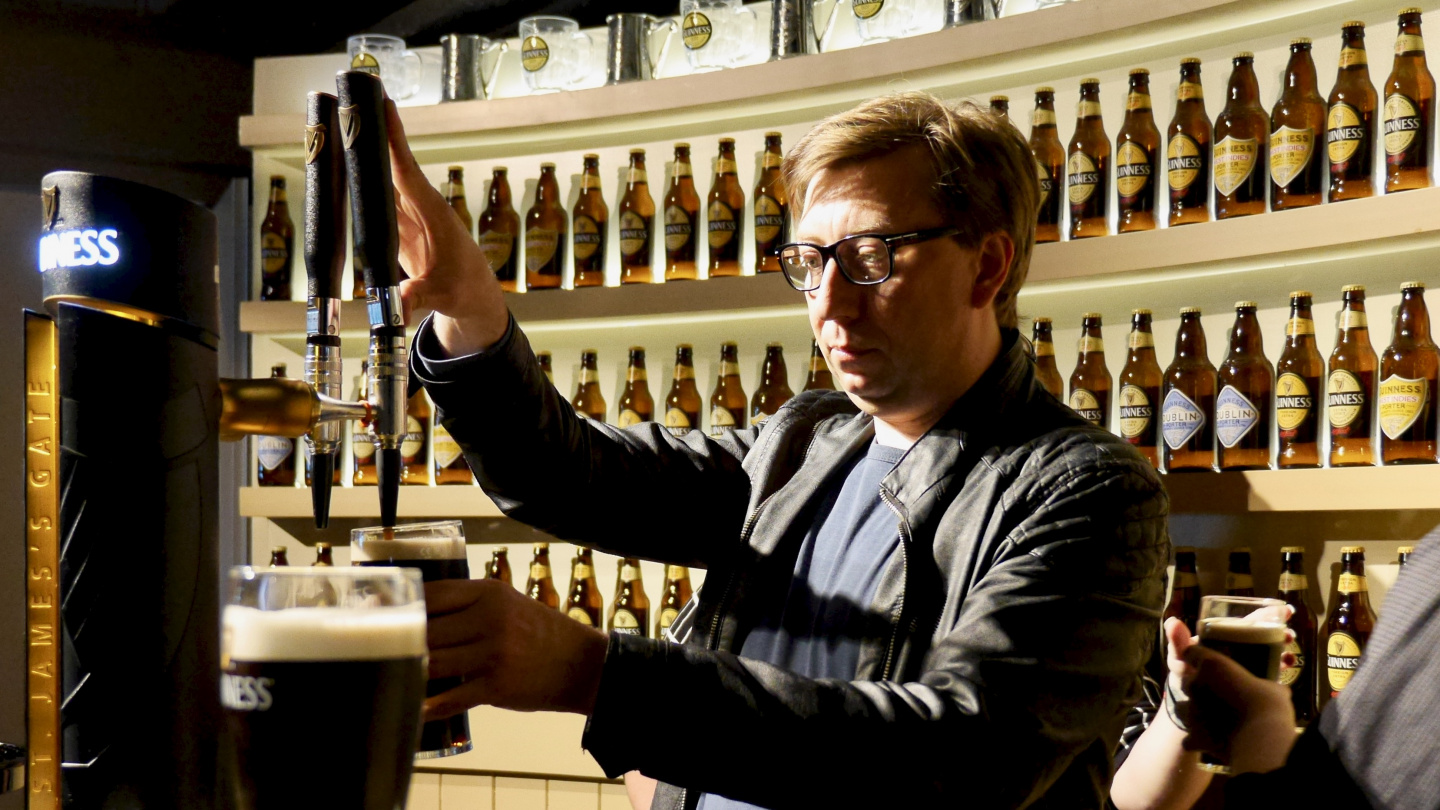
In the tasting room we learned on how to properly taste Guinness and bring out the different flavours. One of the secrets of Guinness is hops that creates the unique taste. Maybe we should get the four ingredients ourselves: barley, hops, yeast and water. Still the recipe of Arthur’s stout is secret. Fortunatelythere is no need to play home chemist, the brewery makes three million pints of stout every day.
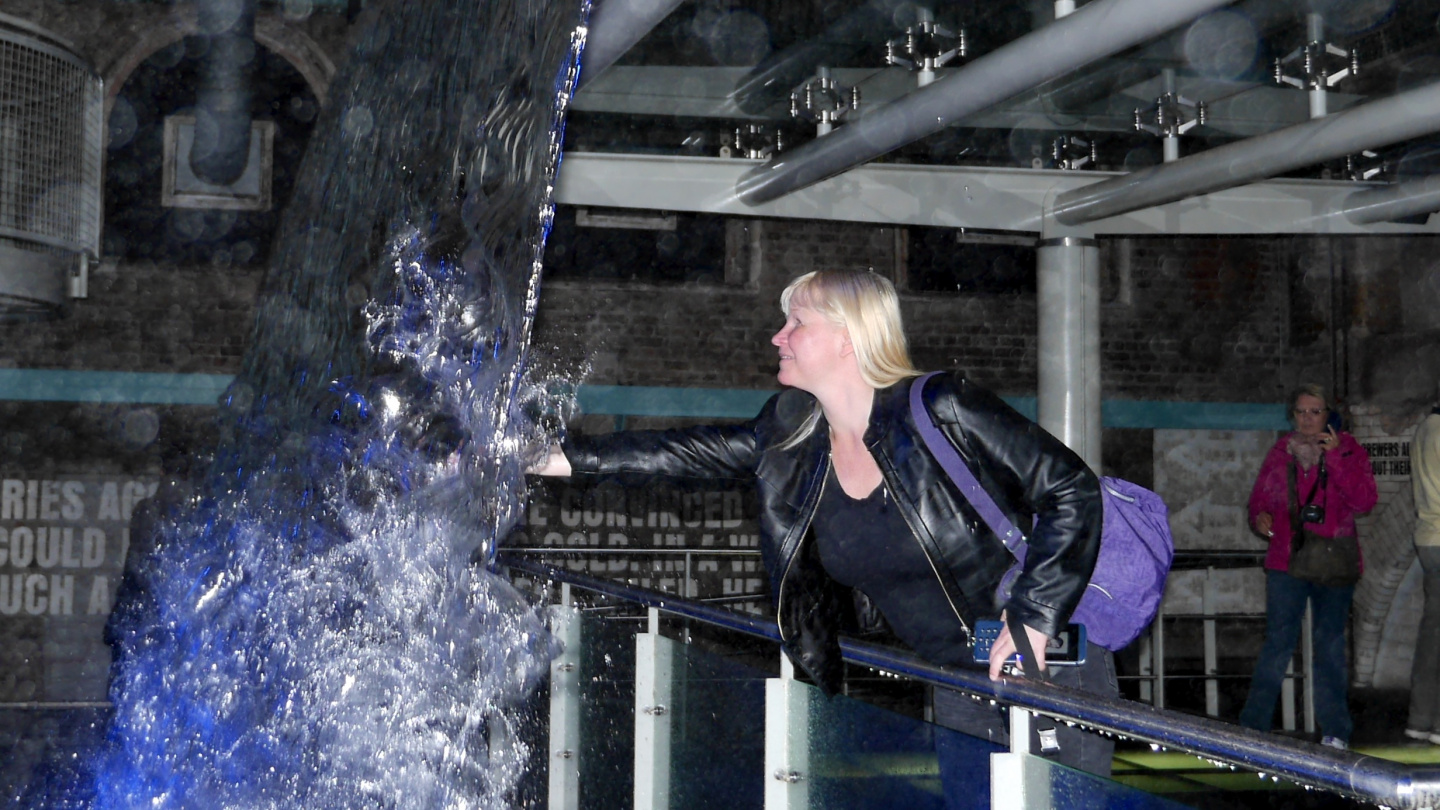
The making of the brew was presented in a very modern way. The head brewmaster was hopping from one screen to another as the brewing process progressed. The screens were embedded into the former brewing equipment and it was like being in Hogwarts and watching the previous headmasters in living paintings. The actual brewery is next door to the seven-storey exhibition house.
As Guinness does not travel well, it was really worthwhile to visit the brewery.

